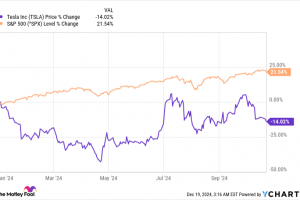
A top Wall Street forecaster told me how to beat the stock market from here: Buy a Treasury bill. I would leak the tip on Reddit, but I’m not sure how many moon rocket emojis to use.
A six-month Treasury yields 5.1%. That’s close to the “earnings yield” of the
S&P 500,
or earnings as a percentage of price. On that basis, safe bonds are the best deal they’ve been relative to stocks in decades.
“I’m hearing a lot of really smart equity guys asking that question, which is, ‘Help me make the case. Why do I need to be in U.S. equities?’ ” says Jonathan Golub, chief U.S. equity strategist at Credit Suisse. “And I say to them, ‘It’s not my job to make the case.’ ”
Investors who can commit for 10 years or more should stick with stocks, but their returns are likely to be lower than they’re used to, says Golub. Near term, defensive stocks don’t look great. Big tech is worse. Favor consumer stocks and healthcare. And if you’re worried about a market swoon, buy a hedge, which for now happens to be cheap.
At the center of Golub’s outlook is something called uninversion, which sounds like yoga, and rightly so, because I might pull a hamstring trying to explain it. Long-bond yields are currently lower than short ones; the 10-year Treasury recently paid less than 4%. That’s an unusual condition known as an inverted yield curve—“curve” referring to the shape of yields plotted on a graph. It can mean that investors expect the economy to slow. They’re usually right.
Credit Suisse counts six yield-curve inversions over the past 50 years, with economic recessions following each by an average of 11 months. The current inversion started in October, so we should be due for growth to stall out by the end of summer. But instead, we won’t get a recession until late 2025, reckons Golub. That’s because what matters most for the timing of these things is when the yield curve uninverts, and that won’t happen soon, judging by pricing on Treasury futures.
Expect tepid growth, elevated but not fierce…
..






